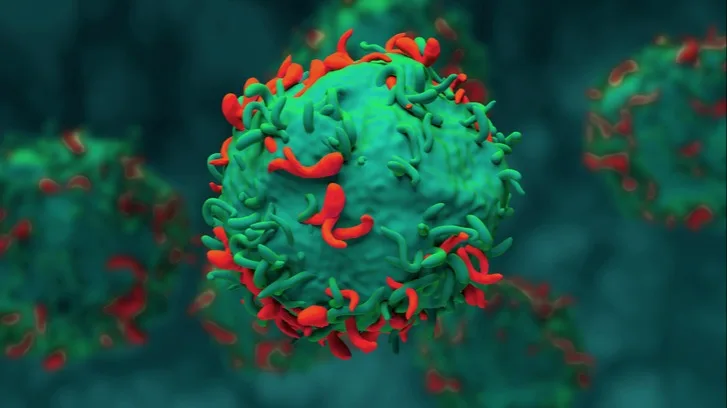
Overview
The FDA held a listening session with cell and gene therapy scientists, advocates and entrepreneurs to learn how to improve the regulatory process.
Roundtable signals interest in platform approvals, real-world evidence and flexible trial designs
The FDA is rethinking how it regulates cell and gene therapies and is letting drug developers know the agency open to new ideas and suggestions on how to improve the process. At a June 5 roundtable, senior FDA leaders including Center for Biologics Evaluation and Research (CBER) Director Vinay Prasad, MD, met with nearly two dozen scientists, entrepreneurs and patient advocates to discuss how the agency could streamline drug reviews without sacrificing safety. The forum was part of a new “listening tour” launched by FDA leadership to increase transparency and spark faster innovation. “We are willing to challenge deeply held assumptions on how we do things, if it means we can deliver more cures and meaningful treatments, safe and effective to the American people,” FDA Commissioner Martin Makary, MD, said at the event. While no formal rule changes were announced, several participants mentioned the need for faster, more flexible approval pathways, especially for small companies developing therapies for patients with rare diseases. Some panelists also asked the agency to make better use of real-world evidence, modernize clinical trial designs and lean into “platform” approvals that let developers reuse the same underlying technology across multiple indications. “We see this event as a large (+) for the biotech industry through openness to expediting drug development via increased flexibility and streamlining,” analysts at banking firm Jefferies wrote in a note to clients following the meeting. “Scientists and [patient] advocates urged the FDA to put weight on [patients’] desire to access novel [therapies], even ones that are not perfect cures, and employing different approval processes for different indications.”
A Call for Regulatory Reform and Infrastructure
David Liu, PhD, a Harvard University professor and co-founder of multiple gene-editing companies, highlighted how his lab’s base and prime editing tools have entered 19 clinical trials, many of them successful, but still struggles commercially due to limited patient numbers. “Each year, 10 million babies are born with one of about 10,000 known rare genetic diseases, many of which are, in principle, now treatable with genetic medicines,” Liu said. “To achieve this goal, we need to build a national infrastructure for interventional genetics,” including smaller-scale manufacturing capabilities and regulatory pathways that don’t cost millions. He proposed a modular system for on-demand gene therapies, treating 1,000 patients by 2030, turning rare disease care into “a national engine for therapeutic innovation.”
Regulatory Requirements as Financial Barriers
Several speakers highlighted how current regulatory requirements create insurmountable financial barriers for treatments targeting small patient populations. Donald Kohn, MD, a professor at UCLA who helped develop a gene therapy for a rare immune disorder that affects about 10 patients per year in the U.S., said his team’s biggest hurdle has been manufacturing fees related to regulatory requirements. The cost to take a gene therapy from an academic medical center production to commercial scale can cost up to $60 million and take three to four years, he said. "The greatest barrier we face today has not been scientific or clinical, but rather financial," Kohn said. “The current reliance on philanthropy is not sustainable or scalable.” Kohn proposed specific regulatory changes that could dramatically reduce development costs, including allowing continued use of "GMP light" manufacturing standards and reducing requirements for multiple process validation runs.
Gaps in Pediatric Access to CGT
Several speakers discussed the urgency for changes around pediatric applications. Catherine Bollard, MBChB, MD, from Children's National Research Institute, noted that while adult CAR-T therapies have proliferated since the first approval in 2017, no new CAR-T therapy has achieved approval for pediatric cancer indications. "If we just focus on the children with solid tumors who have relapsed, we are still treating those patients with the same chemotherapy that we were giving 40 years ago," Bollard said. Crystal Mackall, MD, from Stanford University, said the economics of drug development create systematic barriers for rare disease treatments. She called for regulatory flexibility on trial designs, manufacturing standards tailored to small-batch therapies. She also asked the FDA to ensure its approvals are sufficient to unlock reimbursement from CMS, noting that half of U.S. children rely on Medicaid. “We all know that we need to uphold the quality standards, but we still have to make it somehow commercially viable, or at least sustainable to get these drugs to market,” she said.
Two-Tier Pathway Proposal
Carl June, MD, a professor at University of Pennsylvania whose work helped lead to the first FDA-approved CAR-T therapy, said the U.S. is losing its position as a scientific leader for drug development. “Despite our early leadership, much of the innovation in this field is now happening offshore,” June said. He proposed the U.S. adopt a two-tier system like China’s, where exploratory trials can begin under local review board supervision and escalate to full FDA oversight only after safety and efficacy are shown. Without such changes, he warned, “a regulatory environment that nurtures innovation” may vanish. “In the past two years, over 100 CAR-T trials have begun for autoimmune disease—but they were launched in Germany. We couldn’t do it here,” he said. “The next generation of treatments will emerge abroad if we don’t adapt.”
Opening the FDA’s Black Box for More Transparent Decisions
Prasad said the agency is working to open up what he called the FDA’s “black box” decision-making process. He floated a number of transparency efforts, including publishing video briefings where reviewers explain the rationale behind major approvals or rejections.
The agency has already launched a podcast and YouTube channel to support that mission. These and other reforms are meant to spur more engagement between regulators and developers. “The FDA should have a strong partnership with inventors and scientists and developers and companies and at the same time preserve scientific independence in the product review process,” Makary said, “and so we are deeply committed to that.”








